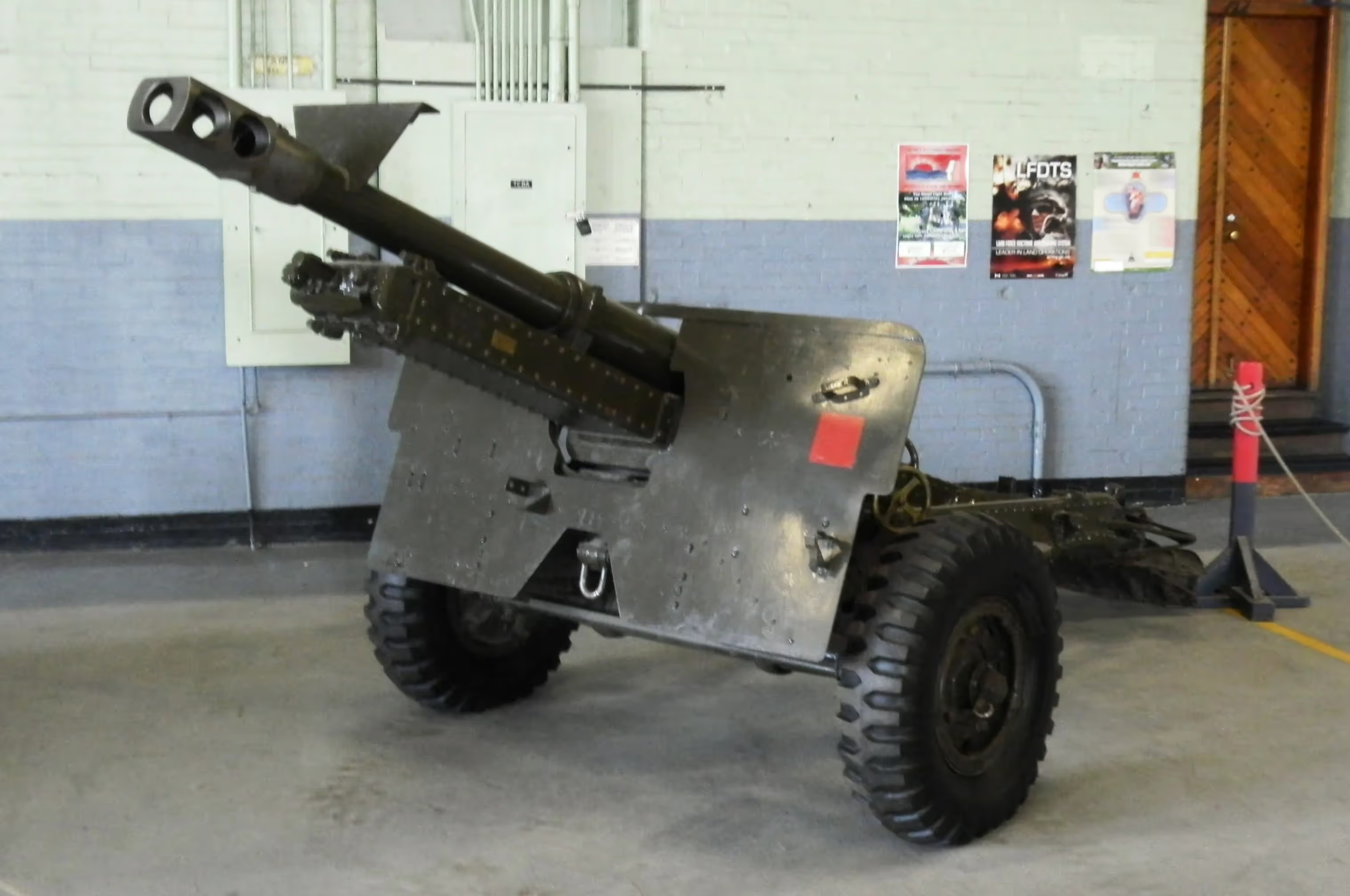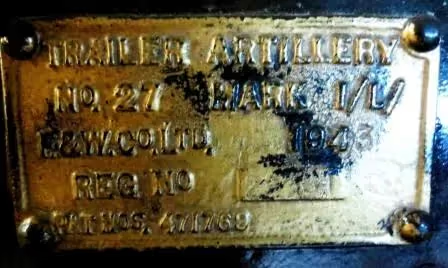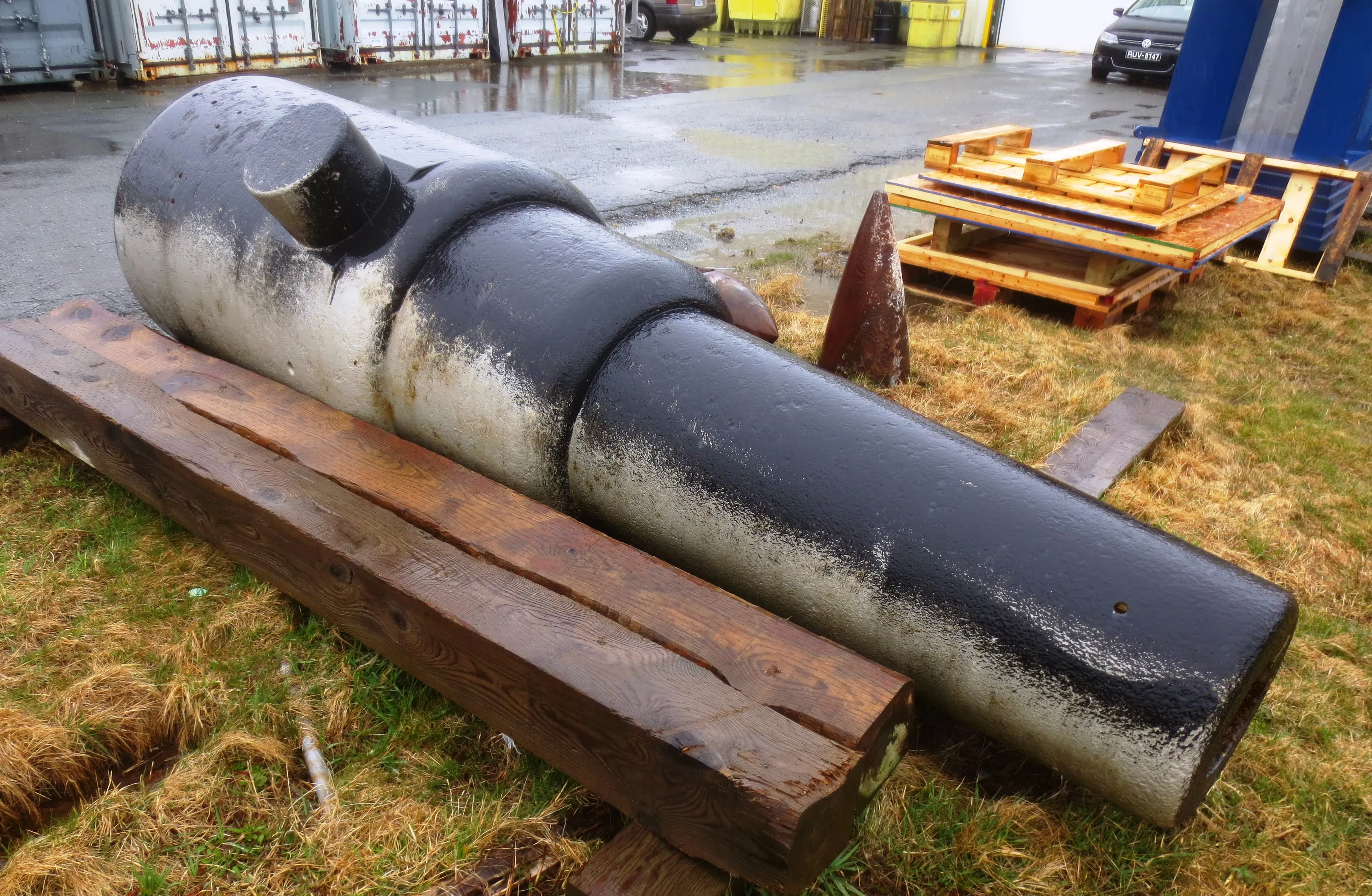Artillery in Canada (9) Nova Scotia: City of Halifax, HMCS Scotian, Fort Charlotte, and George's Island
Artillery in Nova Scotia
City of Halifax
The aim of this website is to locate, identify and document every historical piece of artillery preserved in Canada. Many contributors have assisted in the hunt for these guns to provide and update the data found on these web pages. Photos are by the author unless otherwise credited. Any errors found here are by the author, and any additions, corrections or amendments to this list of Guns and Artillery in Canada would be most welcome and may be e-mailed to the author at [email protected].
For all official data concerning the Royal Regiment of Canadian Artillery, please click on the link to their website:
Royal Regiment of Canadian Artillery Website
Note: Back in the day, artillery in Canada was referred to by its radio call sign "Sheldrake". It is now referred to by its "Golf" call sign. (Acorn sends)
The web page for Nova Scotia has become too big for all the guns to be listed on one page, therefore the guns on display within Annapolis Royal including Fort Anne, the City of Halifax including York Redoubt, the Fort George Citadel, the Maritime Command Museum and Royal Artillery Park etc., are listed on separate pages for Nova Scotia.
Halifax, 1st (Halifax-Dartmouth) Field Artillery Regiment, Royal Canadian Artillery

The 1st (Halifax-Dartmouth) Field Artillery Regiment, RCA, is a Primary Reserve Royal Canadian Artillery (RCA) regiment. It is located in Halifax, Nova Scotia, at 73 Hobson Lake Drive near Bayer's Lake. The unit consists of two batteries, the 51st Field Battery in Halifax and the 84th Independent Field Battery located in Yarmouth.



25-pounder C Mk. 2 QF Field Gun, inside the Armoury.


Limber for the 25-pounder C Mk. 2 QF Field Gun, inside the Armoury.


105-mm C1A1 M2A2 Howitzer, on display in front of the Armoury.

9-inch 12-ton Mk. I Muzzleloading Rifle with Millar pattern breeching ring, one of the four recovered from the trench in front of the Halifax Armoury in 2011. This gun is on display in front of the Armoury.
Halifax, Royal Artillery Park - Listed on a separate web page.
Halifax, Fort George, Halifax Citadel - Listed on a separate page
Halifax, Province House

HMS Shannon commencing battle with the USS Chesapeake. (Library and Archives Canada Photo, MIKAN No. 2836436)






Blomefield Cast Iron 12-pounder Smoothbore Muzzleloading Gun, weight corroded, under the cascabel, The Carron Company of Falkirk, Scotland (Serial No. corroded, CARRON, 1807) on the left trunnion, King George III cypher, mounted on a wooden naval gun carriage on the West side of the Provincial Legislative Building. This gun came from HMS Shannon which fought and captured USS Chesapeake in the War of 1812.


Cast Iron possible 12-pounder Smoothbore Muzzleloading Gun, no cypher, no markings, mounted on a wooden naval gun carriage on the East side of the Provincial Legislative Building. This gun was taken as a war prize from the USS Chesapeake in the War of 1812.

HMS Shannon battles with the American frigate Chesapeake, 1 June 1813. (Library and Archives Canada Photo, MIKAN No. 2895982)

HMS Shannon captures the American frigate Chesapeake, 1813. (Library and Archives Canada Photo, MIKAN No. 2837818)
Halifax, MARCOM HQ, CFB Halifax






QF 4-inch/40 Mk. XXI Gun on the High Angle Single Mk. XXIV Mounting, SIL 1944, (Serial No. S/14676), King George VI cypher, mounted in a deck gun turret. This naval gun is located beside the MARCOM HQ below the McDonald Bridge in the Halifax Dockyard.
Halifax, HMC Dockyard, CFB Halifax

Her Majesty's Canadian Dockyard - L'arsenal - canadien de Sa Majesté CSM Halifax, 1759, Coat of Arms flanked by a pair of cast iron smoothbore muzzle-loading guns mounted on naval carriages.
HMC Dockyard was established as the Royal Naval Dockyard in 1759 during the French and Indian War (aka Seven Years War). It served as the RN’s North American station until 1818 when it became the summer base for the squadron. It is one of the oldest military establishments in Canada and was designated a National Historic Site in 1923.
The Dockyard played a major role in supporting RCN and Allied ships during the First World War and in the pivotal Battle of the Atlantic during the Second World War. Today, HMC Dockyard is home port for the Royal Canadian Navy’s Atlantic fleet and includes MARLANT and Joint Task Force Atlantic HQ, maintenance, training and supply facilities and the Joint Rescue Coordination Centre.



Blomefield Cast Iron Smoothbore Muzzleloading Gun, 3-inch bore, (Serial No. 3905), broad arrow mark, Queen Victoria cypher and the cypher for the Master General of the Ordnance (Fox Maule-Ramsay, 11th Earl of Dalhousie, KT, GCB, PC, 22 April 1801 - 6 July 1874), mounted on a wood naval gun carriage. No. 1 beside the main entrance to HMC Dockyard.





Blomefield Cast Iron Smoothbore Muzzleloading Gun, 3-inch bore, broad arrow mark, Queen Victoria cypher and the cypher for the Master General of the Ordnance (Major General Jonathan Peel, 12 October 1799 - 13 February 1879), mounted on a wood naval gun carriage. No. 2 beside the main entrance to HMC Dockyard.

(Author Photo)
Blomefield Cast Iron 32-pounder 56-cwt Smoothbore Muzzleloading Gun (TBC), 5-½ inch bore, heavily corroded, King George III cypher, recovered from Halifax harbour. Mounted on a wood naval gun carriage, located in front of the central entrance to the Halifax Dockyard.
Halifax, Maritime Museum of the Atlantic, Admiralty House, Stadacona - Listed on a separate page.
Halifax, Point Pleasant Park, Prince of Wales Martello Tower - Listed on a separate page.
Halifax, York Redoubt - listed on a separate page
Halifax, Fort Charlotte, George’s Island

(Library and Archives Canada Photo, MIKAN No. 3349677)
George's Island, Halifax harbour, early 1900s.

(Library and Archives Canada Photo, MIKAN No. 3348312)
George's Island and Halifax terminals, 1934.

(Halifax Military Heritage Preservation Society Photo)

(Library and Archives Canada Photo, MIKAN No. 4132690)
George's Island-Fort Charlotte, Halifax harbour. Upper front battery. [architectural drawing] 1879.

(Halifax Military Heritage Preservation Society Photo)
Originally there were eight 9-inch 12-ton Mk. II Muzzleloading Rifle with Millar pattern breeching rings, on the Upper Battery, and four 10-inch 18-ton Muzzleloading Rifles in an underground Lower Battery.
At present there are seven 64-pounder 71-cwt Muzzleloading Rifles on the island:
64-pounder 71-cwt Muzzleloading Rifle, No. 1, mounted on wood blocks in the Upper Battery position.
64-pounder 71-cwt Muzzleloading Rifle, No. 2, mounted on wood blocks in the Upper Battery position.
64-pounder 71-cwt Muzzleloading Rifle, No. 3, mounted on wood blocks in the Upper Battery position.
64-pounder 71-cwt Muzzleloading Rifle, No. 4, mounted on wood blocks in the Upper Battery position.

64-pounder 71-cwt Muzzleloading Rifle, No. 5, mounted on wood blocks in the Lower Battery position.
64-pounder 71-cwt Muzzleloading Rifle, No. 6, mounted on wood blocks on the ground behind the ramparts.
64-pounder 71-cwt Muzzleloading Rifle, No. 7, mounted on wood blocks on the ground behind the ramparts.
Halifax, Fleet Diving Unit Atlantic, CFB Shearwater


(Photos courtesy of Chris Hollet)
9-inch 12-ton Mk. I Muzzleloading Rifle with Millar pattern breeching ring, No. 1, on wood blocks on the ground. This gun is one of four recovered from a burial site in front of the Halifax Armoury, restored by the Fleet Diving Unit, Atlantic. It is planned for it to be on display with the FDU (A).
Construction Engineers were digging around the Armoury in Halifax and discovered four 9-inch 12-ton Mk. I Muzzleloading Rifles with Millar pattern breeching rings in the summer of 2011 in a burial site in front of the Halifax Armoury. All four were recovered and restored by the Fleet Diving Unit. The Explosive Ordnance Disposal (EOD) Section was called in to render the area safe. Following examination, the guns were moved to a storage site at FDUA. These guns were part of the original 38 Guns installed in the Citadel. The unit cleaned the guns up and they are being relocated for display.


(Author Photos)
9-inch 12-ton Mk. I Muzzleloading Rifle with Millar pattern breeching ring, No. 1, on wood blocks on the ground. This gun is now on display in front of the 1st (Halifax-Dartmouth) Field Artillery Regiment (RCA) armoury.




(Author Photos)
No. 2 of the four guns will be on display with the Fleet Diving Unit, Atlantic. The ordnance on the ground beside it remains to be identified.
No. 3 of the four guns is now on display in the Royal Artillery Park in Halifax, mounted on iron posts.
No. 4 of the four guns is on display at the Maritime Command Museum at Stadacona, mounted on iron posts.

(Chris Hollet Photo)
Halifax, HMCS Scotian
.avif)
.avif)


(Author Photos, 11 Sep 2018)
Bronze Lyle Smoothbore Muzzleloading Gun (2.5-inch bore), AO CO, No. 440, 190, FEH on the muzzle, blank on the left trunnion, US LSS on the right trunnion.
This Lyle type gun was used to fire life lines from ship or shore. Light-weight rope was shot out to a wreck after it had been carefully wound on a rope-board so it would uncoil without snagging. The crews would then use this rope to haul out the heavier lines which actually carried the breeches buoy. The survivors would brought ashore or to the tugboat in a breeches buoy, which was a pair of canvas pants sewed onto a life-preserver. These line guns are used primarily for shore based rescue operations. The shooter would fire, aiming over the victims head and then pull the line within reach of the victim. They are also useful for rescuing victims that have fallen through the ice, or are stranded on a cliff or burning building. Boats in distress need larger lines. Lyle guns were designed to throw projectiles weighing approximately 15 pounds, carrying heavier rope over 1000 feet. Getting this equipment close to a wreck would have been difficult, given the likelihood the conditions that caused the wreck would still have been present. It is mounted on a wood naval gun carriage, inside the ship.
Halifax, HMCS Sackville, K181

HMCS Sackville, K181, 4-inch/45 QF Mk. IX Gun on the High Angle Single Mk. XXIV Mounting, (Serial No. S/unknown), on the forward deck.

(RCN Photo)
HMCS Sackville, K181, ca 1944.

(Library and Archives Canada Photo, MIKAN No. 2288829)
HMCS Sackville stamp.

(Library and Archives Canada Photo, MIKAN No. 3394476)
Hedgehog array onboard HMCS North Bay, Oct 1943.

Hedgehog Anti-Submarine projector/mortars.


40-mm Bofors Light Anti-Aircraft Gun Mk. VIII on a Naval AA mount.
Oerlikon 20-mm/70 Light Anti-Aircraft Gun mounted on a naval gun stand.
Halifax, Stadacona, Juno Towers, WO's Mess, 2648 Lorne Terrace, 2640 Admirals Way.



(Author Photos)
60-mm M5 CDN Mortar, No. 19, 1954. Standing inside the building at the entrance to the Mess.

(Author Photo)
Replica gun, standing inside the building at the entrance to the Mess.




(Author Photos)
Bronze 6-pounder 6-cwt Smoothbore Gun, 6-0-6 (678 lbs), mounted on a wood naval gun carriage, 3-¾ inch bore. King George III cypher and Master General of the Ordnance, Francis Rawdon-Hastings,1st Marquess of Hastings cypher. This gun was one of three guns located in front of the Naval Gunnery School. It has been moved to the outdoor patio beside the WO's Mess at Juno Towers.





Bronze 6-pounder 6-cwt Smoothbore Gun, 6-0-4 (676 lbs), mounted on a wood naval gun carriage, 3-¾ inch bore. King George III cypher and Master General of the Ordnance, Francis Rawdon-Hastings,1st Marquess of Hastings cypher. This gun was one of three guns located in front of the Naval Gunnery School. It has been moved to the outdoor patio beside the WO's Mess at Juno Towers.
Maritime Museum of the Atlantic, 1675 Lower Water Street. - Listed on a separate web page.

Queen Elizabeth II Royal cypher.

Queen Elizabeth II wearing the Vladimir Tiara, the Queen Victoria Jubilee Necklace, the blue Garter Riband, Badge and Garter Star and the Royal Family Orders of King George V and King George VI, photo taken in 1959. She has reigned from 6 Feb 1952 to the present day. (Library and Archives Canada Photo, MIKAN No. 4314245)




(Patrick Connor Photos)
Cast Iron (possibly 12-pounder) Smoothbore Muzzleloading Gun, embedded in the ground with the barrel up, heavily corroded, no markings visible, SE corner of Barrington Street and Bishop Street. There are six known surviving corner cannons in Halifax and Dartmouth, this one by Government House on Barrington Street, one in Historic Properties, one in the Halifax Shipyard, one in the Naval Dockyard, two in Historic Properties, and one in Dartmouth.





